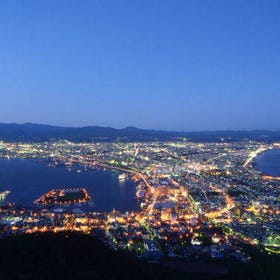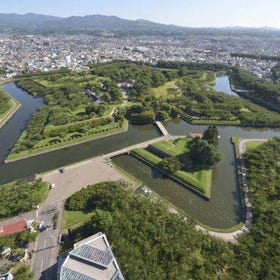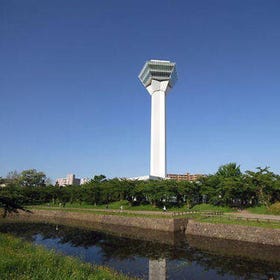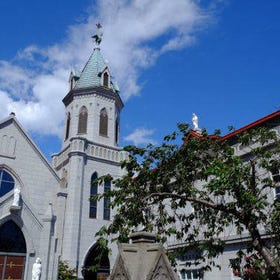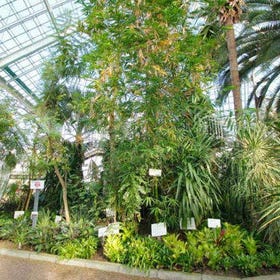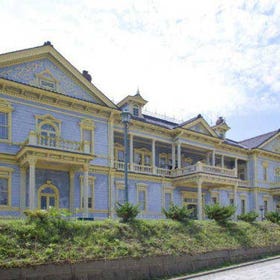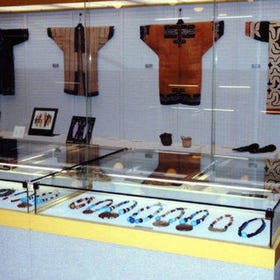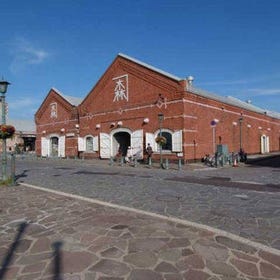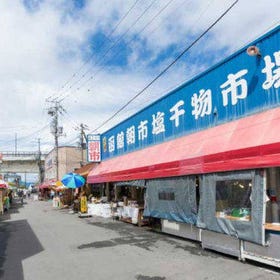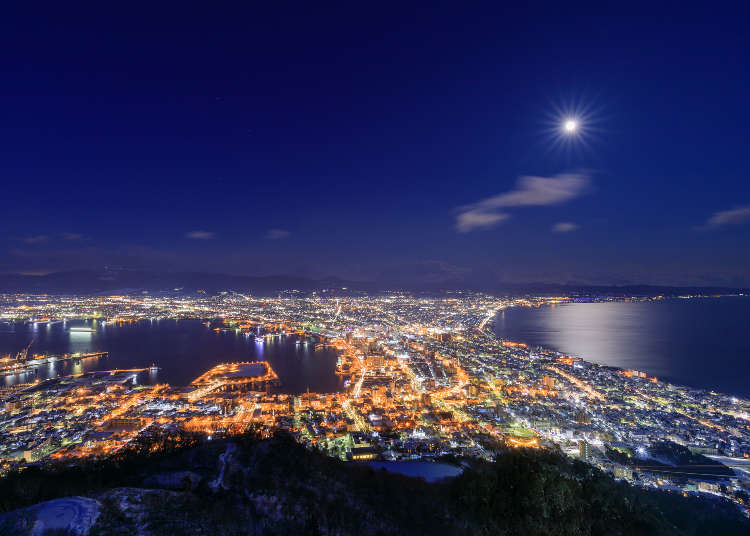
Your Trip to Hakodate: The Complete Guide (Activities, Hotels, Savers & More)
- Written by: Nobuka Kawashima
Hakodate is a port town located in Japan's northern island of Hokkaido. Hakodate is famous for the night view from Mt. Hakodate, ramen, and a uniquely eclectic Japanese-Western culture.
Here are our recommendations for first-time Hakodate sightseers, as well as info on hotels and transportation in Hakodate.
- Table of Contents
-
- 1. Quick facts about Hakodate
- 2. When is the best time to visit Hakodate?
- 3. Getting to Hakodate from Tokyo and transport within Hakodate
- Special Discount(Nippon Rent-A-Car)
- 4. Accommodations: Where to stay in Hakodate
- 5. Must-try foods in Hakodate
- 6. Cultural things to see in Hakodate
- 7. Recommended activities and things to do in Hakodate
- 8. Shopping in Hakodate
- 9. Other sightseeing hotspots around Hakodate
1. Quick facts about Hakodate
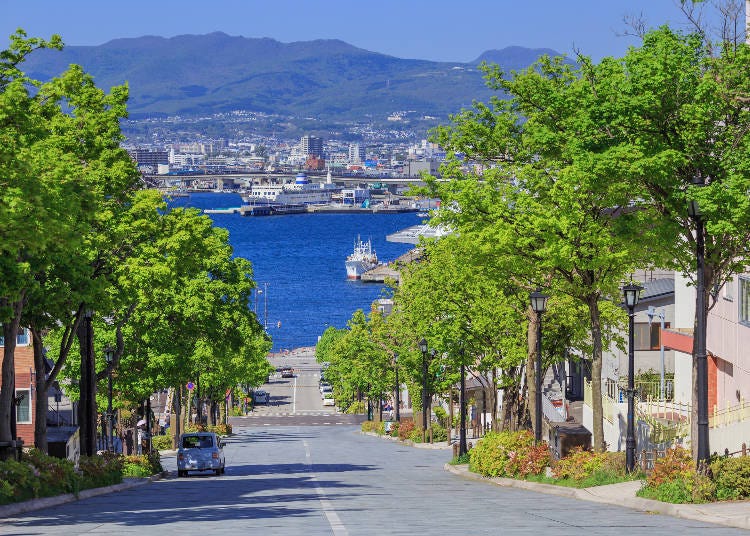
Hakodate is a port town in southwestern Hokkaido and is the hub city of the region. In addition to flights from Tokyo, the Shinkansen from Tokyo also reaches the city via the world’s longest undersea tunnel.
Hakodate rests on a key-shaped peninsula, and the view of the harbor and the city from Mt. Hakodate at the end of the peninsula is superb! The night view in particular is said to be one of the three best in Japan, and attracts crowds of domestic and international tourists all year round.
Historically, Japan held a policy of isolation for many years limiting trade with other countries, but once the country opened in the mid-19th century, Hakodate emerged as a leading trading center. With the opening of the port, Western culture quickly flowed into Hakodate from the latter half of the 19th century to the beginning of the 20th.
This resulted in the construction of many unique, now historical buildings that are a mix of Japanese and Western architecture, and a food culture of international dishes prepared in a Japanese style.
The scenery, night view, unique architecture, culture, and cuisine serve to make Hakodate an attractive tourist destination.
2. When is the best time to visit Hakodate?
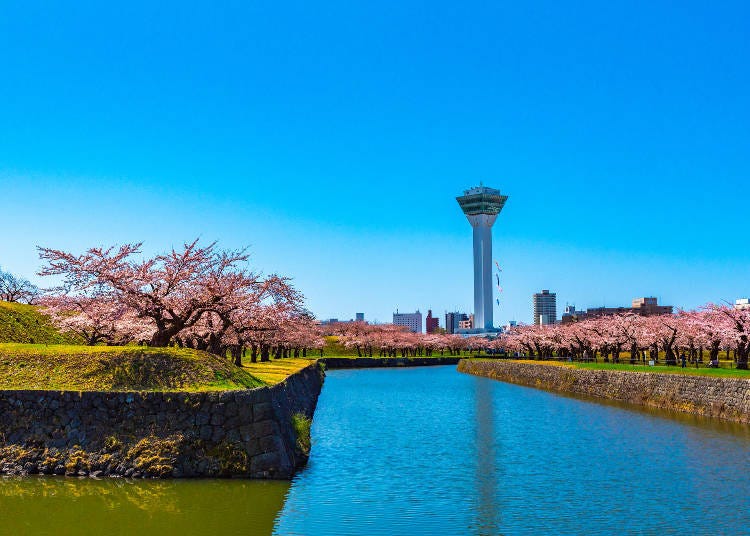
Sightseeing in Hakodate is fun no matter the season. Tourist traffic is constant throughout the year, but peaks in late April and early May when cherry blossoms at Goryokaku Park and Hakodate Park are in full bloom, and from July through September when the city’s famous squid is in season.
Other notable times to visit are from the end of May to June when the vines at Goryokaku Park and Mt. Esan are in full bloom, in October when autumn leaves color the area, and in December when a huge Christmas tree is on display in the bay area.
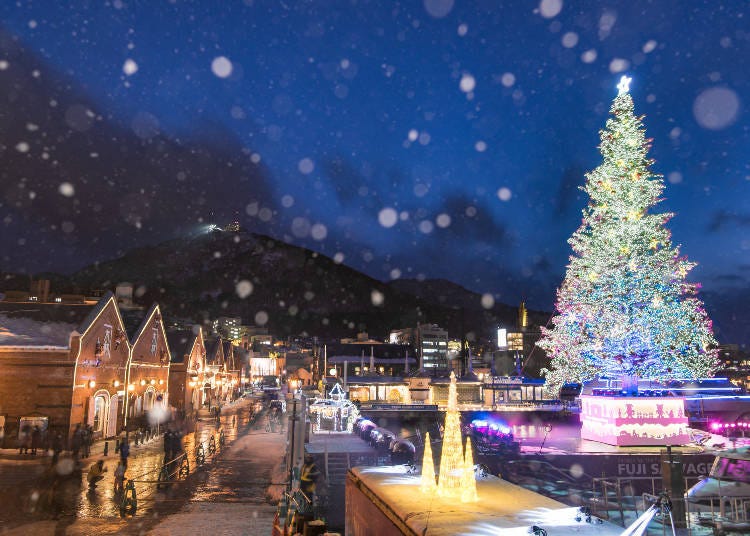
When visiting Hakodate, in summer, you should wear clothes that you can put on quickly, while in winter, wear layers that are easy to remove.
Hakodate’s climate and what to wear
In summer, the daytime temperature is over 30°C, so it’s hot even with short sleeves. However, temperatures often drop below 20 degrees at night.
Also, note that the temperature at the summit of Mt. Hakodate is about 5 degrees cooler than in the city, and the frequent winds make it feel even cooler. Even in mid-summer, bringing a jacket when taking in the mountaintop night view is a good idea.
Snow usually begins falling in late October or early November. From mid-December to mid-March, there are many days when local roads remain covered in hard-packed snow.
Compared to Sapporo, Hokkaido’s largest city, and Asahikawa, the second-largest city, Hakodate’s amount of snowfall is small. Still, roads often freeze and become slippery, so walking with regular shoes can be dangerous. Winter shoes or boots with non-slip soles, or other non-slip attachments for regular shoes are appropriate safety precautions.
Choosing the right shoes is very important when visiting Hokkaido in winter. Even local residents often slip and fall, resulting in broken bones or other injuries.
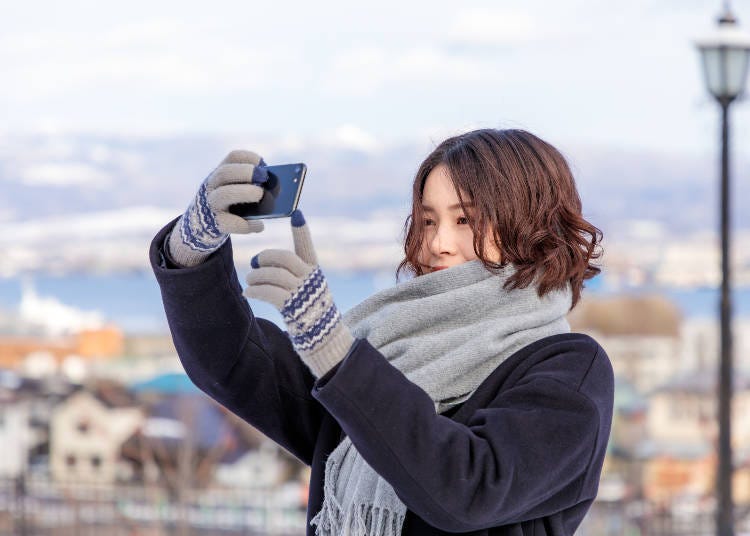
In winter, the temperature is often below freezing even during the day, but buildings are designed for cold weather so interiors are often quite warm, with the temperature difference between indoors and outdoors often reaching 20 degrees or more.
It’s best to wear layers that are easy to put on and take off according to the temperature – wearing a scarf instead of a high-necked sweater, for example. Winter clothes and gloves, of course, are a must for Mt. Hakodate’s night view.
3. Getting to Hakodate from Tokyo and transport within Hakodate
Access from Tokyo to Hakodate

Flights to Hakodate
It is common to fly or take the Shinkansen from Tokyo to Hakodate, and flying is the fastest means of transportation. It takes about 80 minutes to fly from Tokyo’s Haneda Airport to Hakodate Airport, and then about 20 minutes by shuttle bus from the airport to downtown Hakodate.
The airport is near Hakodate Yunokawa Onsen, so if you are staying at a hot spring hotel in that area, you can get there from the airport in just over 5 minutes by bus or taxi.
Airfares vary considerably depending on the airline, point of origin, and time of year, with ticket prices ranging from 9,000 to 27,000 yen one way. One-way shuttle bus fare is 500 yen for adults and 250 yen for children.
Shinkansen

For international travelers who want to take advantage of the JR Group’s unlimited ride Japan Rail Pass (JR line only), it is best to get to Hakodate by Shinkansen.
From Tokyo Station, take the Tohoku-Hokkaido Shinkansen to Shin-Hakodate Hokuto Station, which is the final stop, then change to the Hakodate Liner to reach Hakodate Station with only one transfer. The Shinkansen ride takes about 4 hours 10 minutes, and the Hakodate Liner is another 20 minutes.
It takes longer than traveling by plane but is less complicated than flying. Also, if you are traveling from the suburbs of Tokyo like Ginza or Akihabara, the time required to travel to Haneda Airport makes the overall time required for air travel comparable to going by train.
Getting around Hakodate
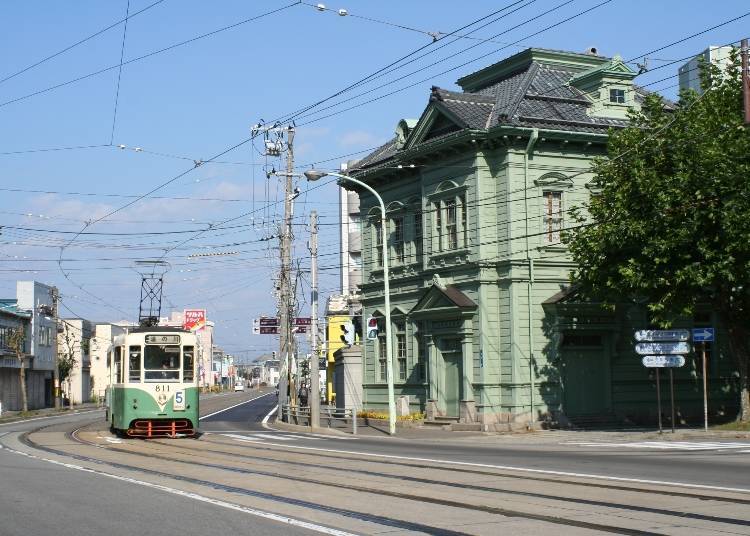
If you are sightseeing within the city, you can fully enjoy Hakodate on foot, by tram and bus, and the ropeway to Mt. Hakodate.
If your accommodations are near Hakodate Station, you can walk to the Hakodate Morning Market in front of the station and enjoy tasty seafood bowls and more.
To get to the renovated red-brick Kanemori Warehouse shopping area and the Bay Area where you can enjoy the harbor scenery, take the tram to Jujigai tram stop, about 3 stations and 5 minutes away from Hakodate Station. It’s about a 5-minute walk from the tram stop or a 15-minute walk from Hakodate Station.
The Motomachi district, where the Hachimanzaka Slope photo spot at the foot of Mt. Hakodate overlooking the harbor and the Russian Orthodox Church are located, is within a 10-minute walk from Jujigai or the next tram stop, Suehirocho.
Goryokaku Tower, where you can see the star-shaped fortress moat from above, is located in Goryokaku Park, 15 minutes by tram then 10 minutes on foot from Hakodate Station.
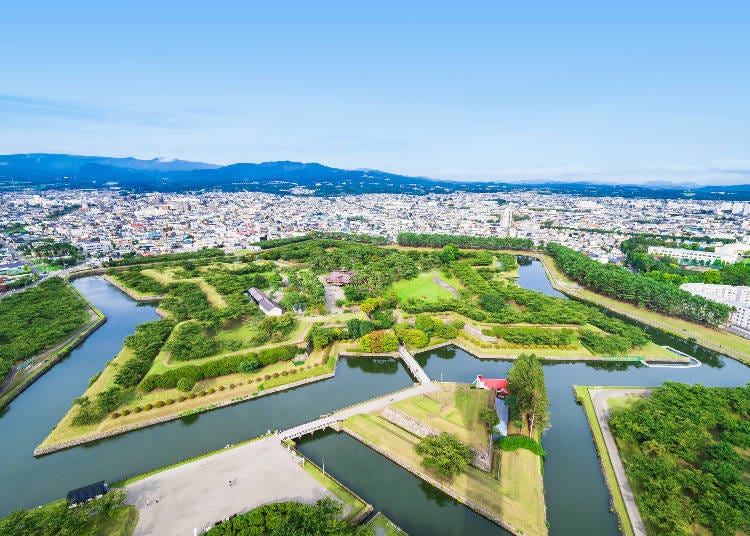
You can reach Mt. Hakodate by ropeway, bus, or taxi. The ropeway platform is located in the Motomachi district, and is easy to reach when strolling through Motomachi and the Bay Area. It takes about 5 to 10 minutes to get there by taxi from Hakodate Station.
The road leading to the summit of Mt. Hakodate is closed in winter (November 13, 2023 to April 8, 2024), but you can get there by bus or taxi from mid-April to early November. It is convenient since many buses depart from and arrive at the large hotels in front of Hakodate Station.
You can also rent a car to get to the mountain, but, regardless of the season or weather, vehicles other than buses and taxis are prohibited from 5:00 PM to 10:00 PM (4:00 PM to 9:00 PM after October), so if you rent a car, parking near the ropeway platform and taking the ropeway is necessary to see the night view.
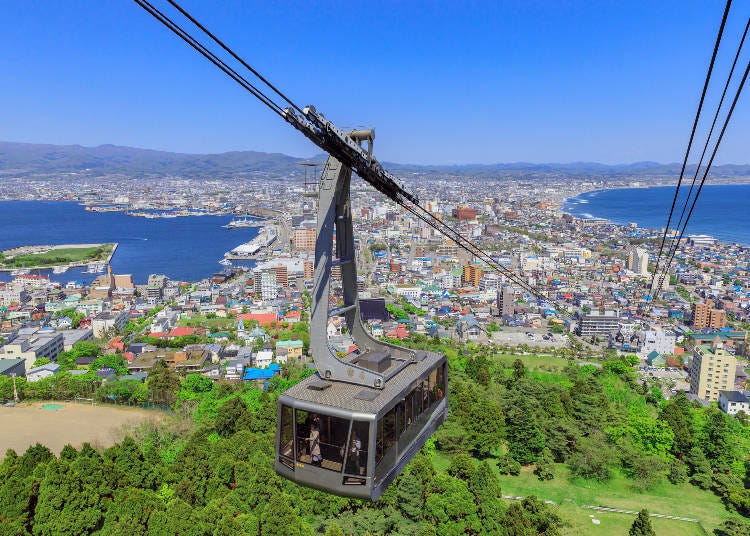
In Hakodate, there are "One-day Streetcar Pass" (600 yen for adults, 300 yen for children) and "Campus" One-day Unlimited Bus Ticket (800 yen for adults, 400 yen for children) available for purchase. Since the fares for streetcars and buses range from 210 yen, it is convenient and cost-effective if you plan to ride multiple times, as it eliminates the need for individual payments each time.
Transportation for sightseeing outside Hakodate
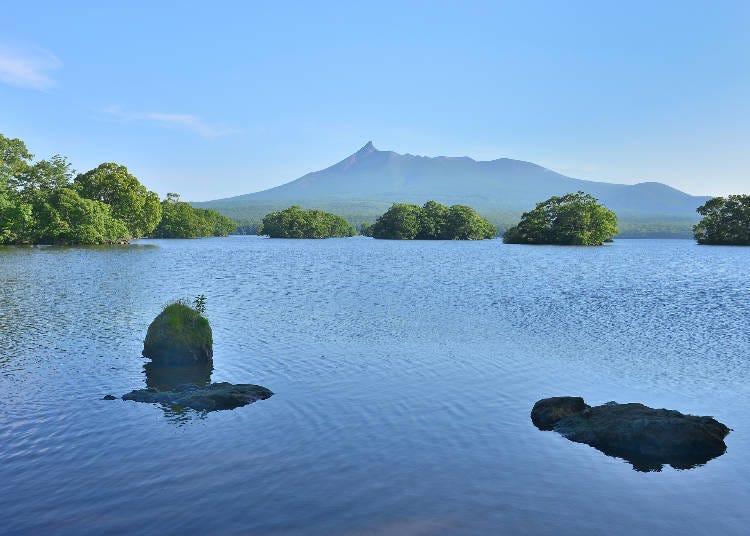
If you want to visit Onuma Park, which home to Lake Onuma and Lake Konuma and their 126 islands, you can use the Japan Rail Pass and get there in about 25 to 30 minutes by JR limited express train from Hakodate Station to Onuma Koen Station, or about 10 minutes from Shin-Hakodate Hokuto Station. There are souvenir and bicycle rental shops in front of Onuma Koen Station, and the lakeside is a 5-minute walk from the station.
If you want to go sightseeing at locations like Shirotai Ranch and Kijihiki Kogen on the way from Hakodate to Onuma Park, renting a car is your best option.
If you are sightseeing only in the city, renting a car isn’t necessary, but if you plan to visit the suburbs or distant places like the azaleas and volcanic craters of Mt. Esan, you’ll need a car. Rentals are available at Hakodate Airport or in front of Hakodate Station.
Special Discount(Nippon Rent-A-Car)
Get 10% off when you book via the special site. (Coupon code:iUzM2RfVlJ)
4. Accommodations: Where to stay in Hakodate
Hakodate has four main areas in which many hotels can be found, and there are more places to stay in the suburbs.
Hakodate Station / Daimon Area

The Daimon district is near downtown Hakodate, Hakodate Station, and the Hakodate Morning Market. It’s convenient for transportation, and you won’t have to worry about finding places to eat. There are numerous accommodations, consisting mainly of reasonably-priced business hotels and middle-class hotels.
If you’re visiting Hakodate for the first time and wondering where to stay, Daimon is a convenient starting point.
Furthermore, on June 1, 2023, "Premier Hotel - Cabin President - Hakodate" opened just a 1-minute walk away from JR Hakodate Station.
-

-
Address
14-10 Wakamatsucho, Hakodate-shi, Hokkaido, 040-0063
View Map -
Nearest Station
Hakodate-Ekimae Station (Hakodate Tram Line 2 / Hakodate Tram Line 5 )
2 minutes on foot
-
Address
14-10 Wakamatsucho, Hakodate-shi, Hokkaido, 040-0063
Bay area / Motomachi area
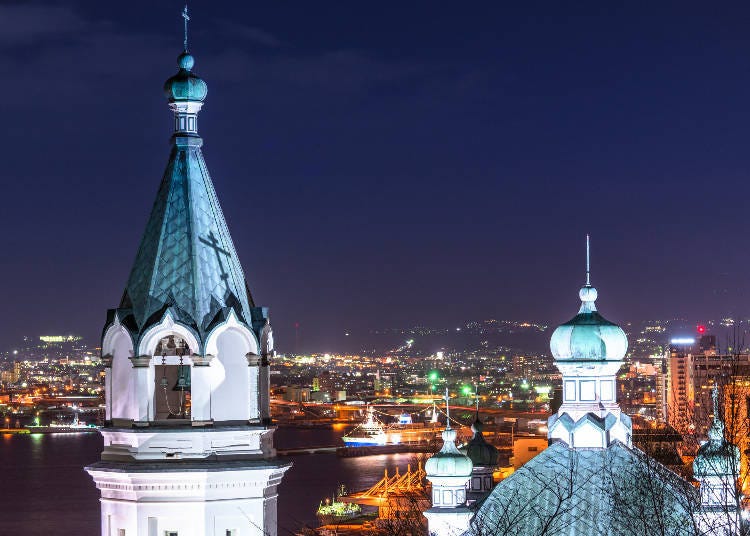
One of the Motomachi area’s advantages is that you can enjoy sightseeing day or night simply by walking from your hotel to Hakodate’s main attractions. Although the number of hotels is rather small, there are middle and high-class hotels and B&Bs with a few guest rooms.
Motomachi is home to many classic buildings and stylish accommodations; however, there aren’t many restaurants around the hotels that are open at night, so you’ll need to eat at your hotel or have dinner in Daimon.
Additionally, in May 2023, the second building of "La Vista Hakodate Bay ANNEX" opened in the Hakodate Bay Area. It boasts a large communal bath on the upper floors with natural hot springs, offering a splendid view of Mount Hakodate from its elevated location.
-

-
Address
5-23 Otemachi, Hakodate-shi, Hokkaido, 040-0064
View Map -
Nearest Station
Uoichibadori Station (Hakodate Tram Line 2 / Hakodate Tram Line 5 )
6 minutes on foot
-
Address
5-23 Otemachi, Hakodate-shi, Hokkaido, 040-0064
Goryokaku area
There are a few reasonably priced middle-class hotels in the area around the Goryokaku Park tram stop, although the number is noticeably lower than what you’ll find near Hakodate Station. There’s a long-standing department in front of the tram stop, and the area has a stronger local flavor than the area surrounding Hakodate Station, so Goryokaku is recommended for those hoping to enjoy a more local, less touristy atmosphere.
Yunokawa area
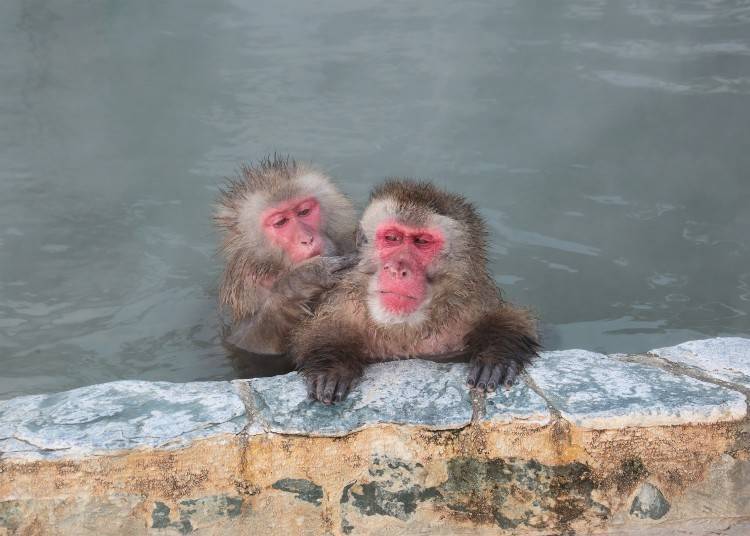
The Yunokawa Onsen area is recommended for people who want to immerse themselves in Japanese hot spring culture. In the neighborhoods around Yunokawa Onsen, there are plenty of hot spring hotels of various sizes as well as purely Japanese-style hot spring inns. They range in grade from economical hotels to high-class hotels.
The Hakodate Tropical Botanical Garden, where you can see monkeys bathing in hot springs, is also within walking distance. Despite being from the city center, there are many direct buses to the summit of Mt. Hakodate, so you can enjoy the award-winning night view that’s the centerpiece of sightseeing in Hakodate without any problems.
5. Must-try foods in Hakodate
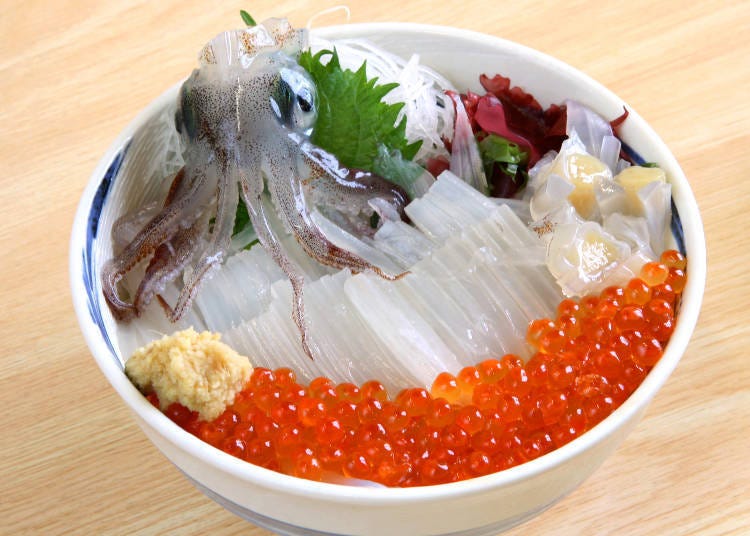
Hakodate’s signature dining consists of a variety of local foods that have evolved uniquely in Hakodate, including fresh seafood bowls, fresh squid sashimi, and Hakodate ramen.
Seafood bowls and squid sashimi are usually eaten at the Hakodate Morning Market in front of Hakodate Station. Hakodate’s specialty is squid, and you can enjoy the relatively light-tasting “yari ika” (spear squid) from winter to spring, and the slightly richer-tasting “maika” variety in summer and autumn.
It’s not common throughout Japan, but one of Hakodate’s most delicious squid dishes is “ikagoro,” made by combining squid offal, grated ginger, and soy sauce. Aside from sashimi, “squid somen,” which is squid served with soy sauce-based soup and eaten like noodles, is also popular.
In addition to the Hakodate Morning Market, there are many izakaya and sushi restaurants in the city that serve squid sashimi, and the sight of freshly prepared squid moving on a plate makes for popular social media content.
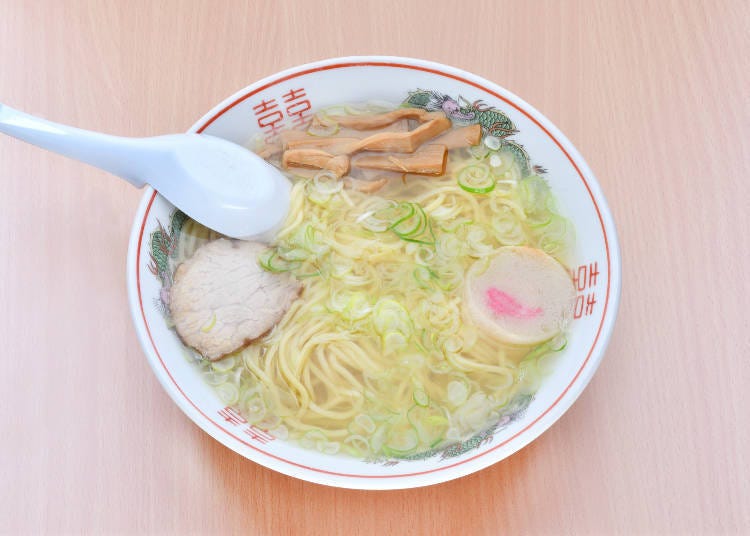
Since Hakodate port opened in the late 19th century and consulates, churches, and monasteries from various countries were constructed, cultures and customs from outside Japan quickly impacted the city and food culture from all over the world took root in Hakodate.
One example is Hakodate ramen. Hakodate’s signature ramen is characterized by its light, transparent salty soup and thin noodles. According to one account, this style of ramen finds its origins in southern China’s salty tanmen noodles.
It is said that Hakodate’s earliest salt ramen was first served at Chinese restaurants in the city in the latter half of the 19th century before ramen shops became common in Japan.
Nowadays, there are ramen shops all over the city, with a higher concentration around Hakodate Station and the Daimon area. Almost all shops sell salty Hakodate ramen.
In Hakodate, many restaurants serve Japanese-style Western food and sweets shops that mainly sell souffle and chocolate.
One of the most well-known restaurants is Gotoken, founded by a cook who studied at the Hakodate Orthodox Church and started the restaurant shortly after the opening of Hakodate to serve Russian food and bread.
It remains one of Hakodate’s top Western restaurants, and these days, curry is one of its most popular menu items.
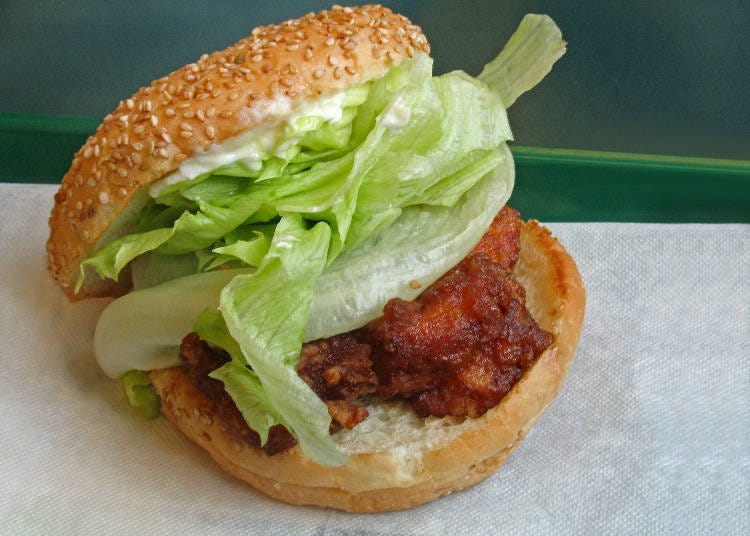
Local hamburger chain Lucky Pierrot is popular with locals and tourists alike. Their specialty is the “Chinese chicken burger,” incorporating Chinese-flavored fried chicken into an American-inspired hamburger.
Along with Lucky Pierrot, another popular local food option is the “Yakitori Bento” sold at the Hasegawa Store supermarket. Yakitori is normally grilled chicken, but, for some reason, southern Hokkaido “yakitori” is typically grilled pork instead of chicken. This simple bento lunchbox is made by topping rice with seaweed, skewered pork, and grilled green onions. It’s a meal beloved by locals for many years.
In August 2022, the former Hokkaido Government Hakodate Branch Office in Motomachi Park was repurposed as the restaurant "Jolly Jellyfish." It offers a delightful dining experience with popular dishes like the "Steak Pilaf (Stepi)," known as one of Hakodate's signature foods. Enjoy Hakodate's cuisine in this charming Motomachi location.
6. Cultural things to see in Hakodate
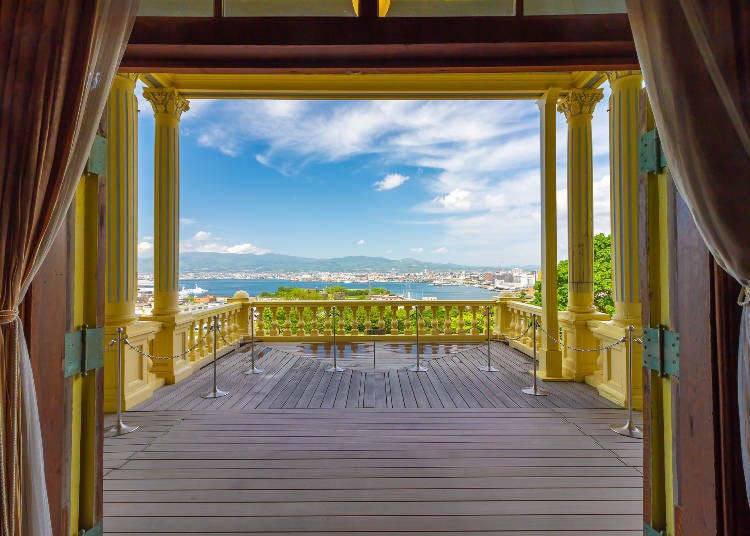
Hakodate’s iconic sights are the oft-mentioned night view from Mt. Hakodate, the harbor view from Hachimanzaka, and the star-shaped Goryokaku fortress as seen from Goryokaku Tower. These are the must-see spots when visiting Hakodate.
The Motomachi district, home to the Hachimanzaka slope, features a unique cityscape that fuses the cultures and religions of various countries. It’s a popular area for sightseeing on foot.
Within a 5-minute walk from Hachimanzaka, you’ll find many different faiths represented: the Russian Orthodox Hakodate Hristos Church, Anglican Hakodate St. Johns Church, Roman Catholic Motomachi Church, churches from four different Protestant denominations, the Buddhist Shinshu Otani sect’s Higashi Honganji Hakodate Betsuin, and Shinto Funatama Shrine, which is thought to be the oldest shrine in Hokkaido.
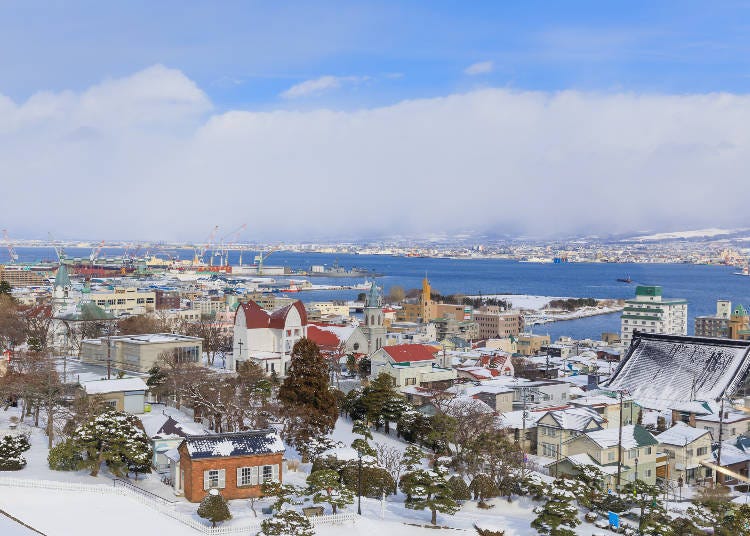
The area is dotted with historical buildings, but the main attraction is the Western-style Old Public Hall of Hakodate Ward, built in 1910. Not only is the exterior beautiful, but the interior’s gorgeous chandeliers, furnishings, walls, and doorknobs are all elegant as well. And the second-floor balcony offers a superb view of Hakodate Port!
If you want to experience the history and culture of Japan, the Hakodate Magistrate’s Office in Goryokaku Park is a great place to visit. The wooden building is a restoration of a short-lived governmental office of the Edo Shogunate in the mid-19th century. The large tatami-matted hall is spectacular and you can enjoy the view of the star-shaped fortress ruins from Goryokaku Tower.
7. Recommended activities and things to do in Hakodate
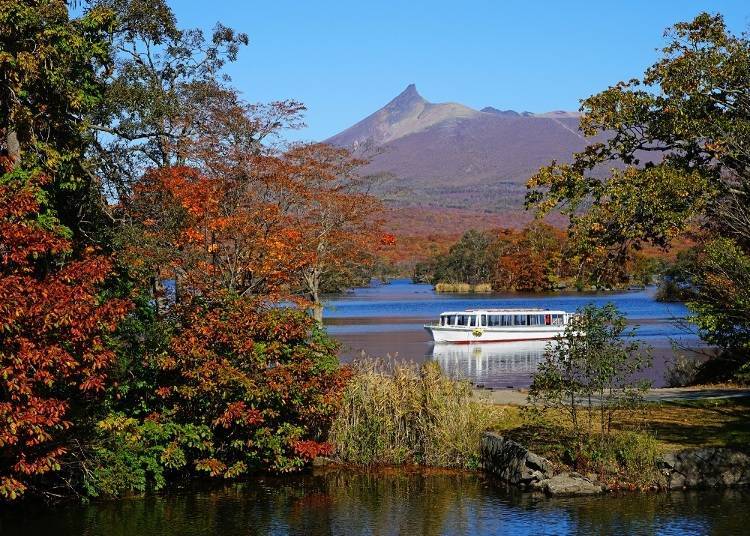
Experience the unique squid fishing activity in Hakodate, adding to the city's list of distinctive tourist attractions. At the "Live Squid Fishing Moat" in the Hakodate Morning Market, visitors can catch squid swimming in a tank using a fishing rod. The staff will then prepare the freshly caught squid as sashimi right before your eyes.
Immerse yourself further in Hakodate's culture by donning exquisite costumes reminiscent of the popular styles from over a century ago. Visit the Hakodate Hikara Costume Museum, located in the Old Public Hall of Hakodate Ward, where you can transform into aristocrats of yesteryears and capture memorable pictures in the splendid hall.
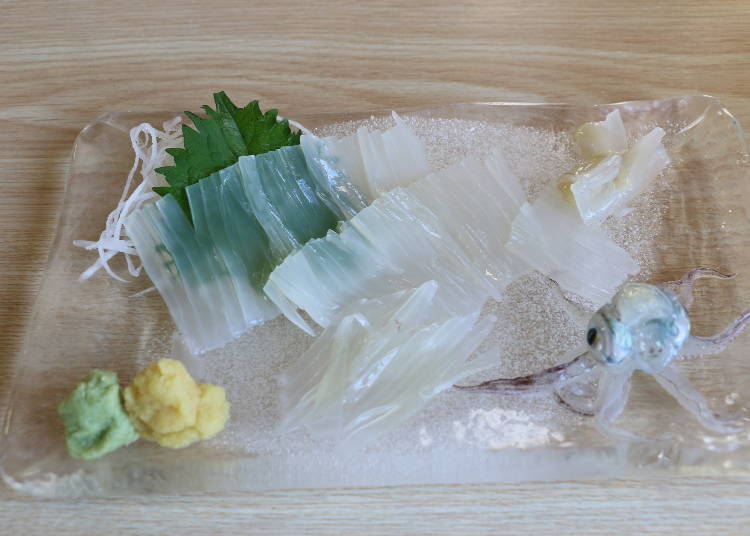
For outdoor sports enthusiasts, Mt. Hakodate is an ideal destination for trekking. The ascent from the mountain's base to the summit takes approximately 60 minutes and features a gentle climb without steep sections. While distinct from the famous night view, the daytime scenery is equally breathtaking. On clear days, you can even catch a glimpse of the shadow of Honshu, Japan's largest island, across the Tsugaru Straits.
Located further away from downtown Hakodate, Onuma Park offers various activities throughout the seasons. Visitors can enjoy sightseeing boats, canoeing, and lakeside cycling during the summer, while winter brings opportunities for snowmobiling and smelt ice fishing on the frozen lake surface.
8. Shopping in Hakodate
Shopping in Hakodate happens mainly around Hakodate Station, the bay area, Motomachi, and near Goryokaku Park.
Around Hakodate Station
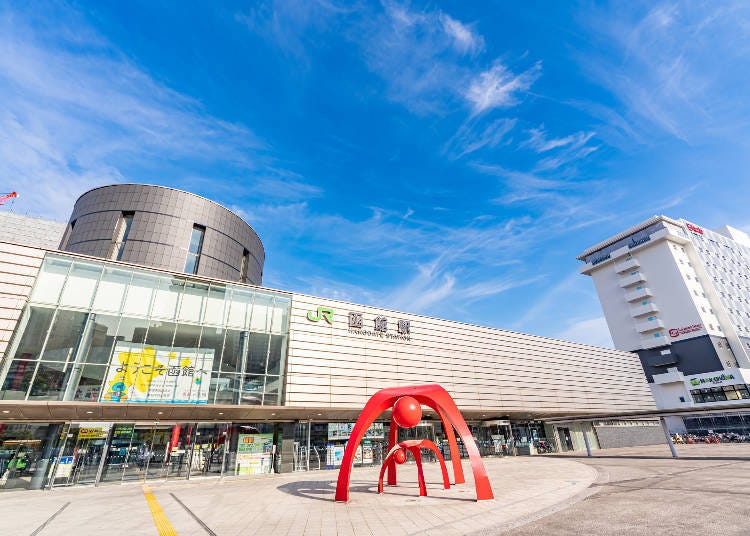
You can buy souvenir sweets as well as take-out foods like ekiben (station lunch boxes) and deli items at the Hokkaido Shiki-Saikan and the Hakoviva and Kiraris Hakodate shopping centers in front of the station.
Both fresh and processed seafood are on sale at the nearby Hakodate Morning Market (Hakodate Asaichi). As the name suggests, the market is open from early morning, and since many shops are closed later on, it’s best to go before noon.
Bay area
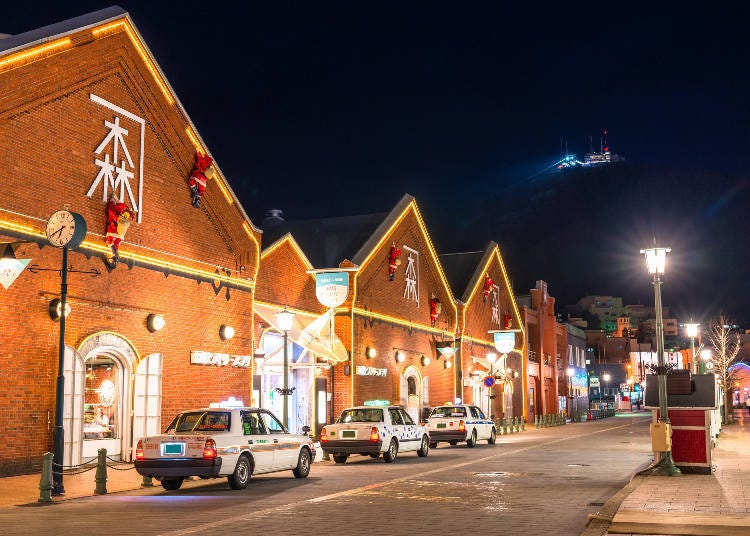
Kanemori Warehouse and Hakodate Meijikan are home to additional sweet shops and more. These retro brick buildings are picturesque and are perfect for taking photos while shopping.
Motomachi district
Small shops dot the area, including boutiques and galleries that sell handmade art, giving a “treasure hunt” feeling to your stroll through the city.
Goryokaku district
Hokkaido’s long-established Marui Imai Hakodate department store is an easy place to find the products locals usually buy, including original Hakodate sweets. You can also buy other desserts and souvenirs inside Goryokaku Tower.
9. Other sightseeing hotspots around Hakodate
Due to its peninsular location at the southern tip of Hokkaido, the possibility for day trips from Hakodate is somewhat limited.
It’s best to think of Hakodate as the gateway to Hokkaido, enjoy sightseeing in the city and its suburbs, and make visits to other parts of Hokkaido as part of your full itinerary, rather than considering Hakodate as a “base” for your tour of the whole island.
That being said, here are some typical spots you can reach on a day trip from Hakodate.
Onuma Park
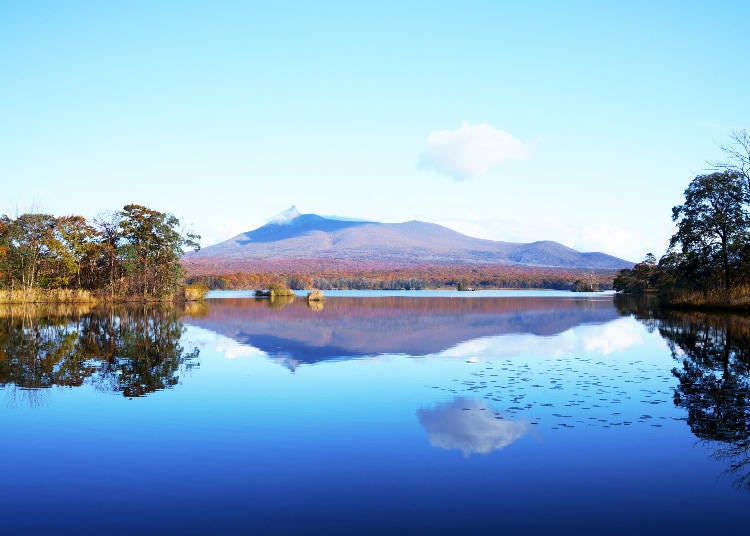
Onuma Park is about 25 to 30 minutes by limited express train from Hakodate and, except during the changing seasons in early winter, you can enjoy a variety of activities throughout the year, including lakeside walks and cycling. “Onuma Dango” sold in front of Onuma Koen Station, is a well-known Japanese sweet that has been around for over 100 years.
Mt. Esan
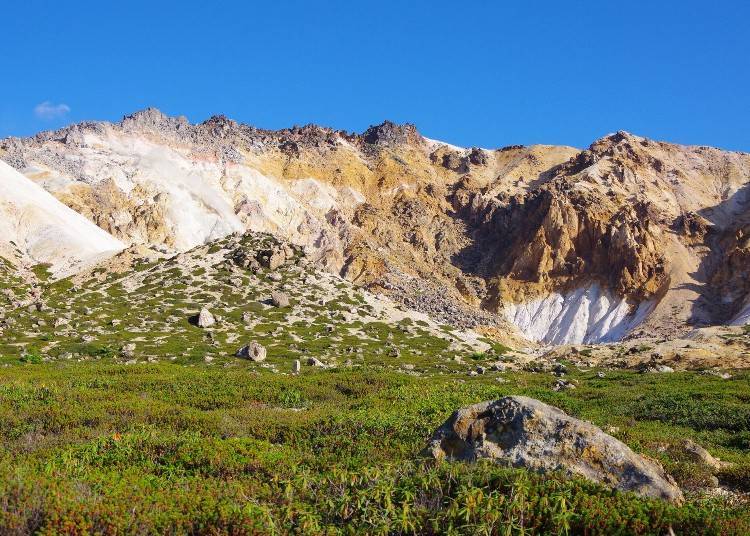
About 1 hour by car from Hakodate, Mt. E, or Esan, is a volcano that rises from the beach and the azaleas that blanket the foot of the mountain are spectacular.
You can rent a car to get midway up the mountain, and the volcanic crater is still visible up close. It takes about 70 minutes to reach the summit from the parking lot, and minimal climbing equipment is required to ascent the rocky mountain trail.
Matsumae
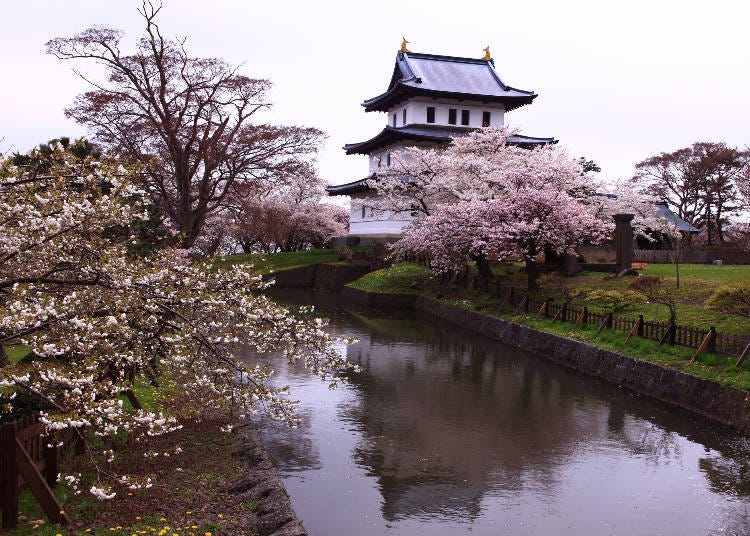
About 1 hour and 50 minutes from Hakodate by car, you can visit Japan’s northernmost castle town and the restored Matsumae castle. The grounds around the castle are famous for their cherry blossoms, which bloom in late April and are visible for about a month as a variety of early to late bloomers, create a magnificent, photogenic landscape.
Hakodate is a port town with a beautiful fusion of Japanese and international cultures. It harbors a landscape and food culture unlike any other in Japan. You can experience the charm of the city in only one night, but it’s best to stay for two or three nights if you want to experience the city at a more relaxed pace and take full advantage of the delights of local dining.
It may also be a good idea to stay for a couple of nights in case there’s bad weather and ensure you don’t miss the night view. Plan well and enjoy a memorable trip to Hakodate!
Text by: Nobuka Kawashima
*This article was originally published in October 2021 and updated in June 2023.
English translation by Gabriel Wilkinson
A travel creator who has traveled all over Hokkaido in search of spectacular scenery and local gourmet food, Nobuka moved to Hokkaido from Tokyo in 2009. Since then, she has continued to photograph and write articles on Hokkaido travel and food for LIVE JAPAN and other tourism websites and travel magazines. She is a certified Hokkaido Tourism Master, a title given to Hokkaido tourism experts by the Hokkaido Chamber of Commerce and Industry, and also holds certifications as a Domestic Travel Service Supervisor and Chief Itinerary Manager. As a transgender person herself, she runs a support group to create an environment that makes travel easier for LGBTQ people, and also gives lectures and talks at universities and companies.
- Area
- Category
*Prices and options mentioned are subject to change.
*Unless stated otherwise, all prices include tax.
Popular Tours & Activitiess
Recommended places for you
-
Appealing

Mt. Hakodate Observatory
Forests & Mountains
Hakodate
-
Appealing

Rukku and Uohei
Izakaya
Sapporo / Chitose
-
Appealing

Noboribetsu Onsen
Hot Springs (Onsen) & Bath Houses (Sento)
Noboribetsu / Lake Toya
-
Appealing

Otaru Canal
Rivers, Lakes & Canyons
Otaru
-

Sapporo Clock Tower
Landmarks
Sapporo / Chitose
-

Farm Tomita
Other Nature
Furano / Biei / Sounkyo
-

7 Iconic Hokkaido locations that will make your Instagram shine
by: Himanshi Shah
-
Ad

Smart Ways to Avoid Crowds and Enjoy a Safe, Comfortable Trip to Otaru.
-

Great Local Eats: 5 Expert-Recommended Local Chain Restaurants in Hakodate
by: Nobuka Kawashima
-

Scenic Road Trip from Hakodate to Matsumae: Stunning Views, Traditions, and Tasty Delights
by: Nobuka Kawashima
-

Expert-Recommended: 9 Hakodate Hotels Serving Up the Best Breakfasts in Town
by: Nobuka Kawashima
-
Ad

Cycling Through Hokkaido: Discover the Beauty of Memuro and the Tokachi Plains
-

10 Awesome Things To Do in Hakodate, Hokkaido
-

Get to Know Otaru, Japan's Fairytale City!
by: Steve Csorgo
-

10 Important Japanese Phrases to Know Before You Enter a Japanese Convenience Store!
by: Teni Wada
-

(Video) Walking Tour along Narita Omotesando - Quaint Historical Village near Narita Airport!
by: Victor Gonzalez
-

Otaru Travel Guide: Inside Hokkaido's Leading Destination (Sightseeing, Food, and Shopping Tips)
-

One Week in Hokkaido: 8-Day Itinerary For First-Timers (Sapporo, Otaru, and Niseko)
- #best sushi hokkaido
- #things to do hokkaido
- #best ramen sapporo
- #what to bring to japan
- #new years in tokyo
- #what to buy in ameyoko
- #japanese nail trends
- #what to do in odaiba
- #onsen tattoo friendly tokyo
- #daiso
- #best sweets otaru
- #japanese fashion culture
- #best nature furano
- #japanese convenience store snacks
- #best japanese soft drinks














